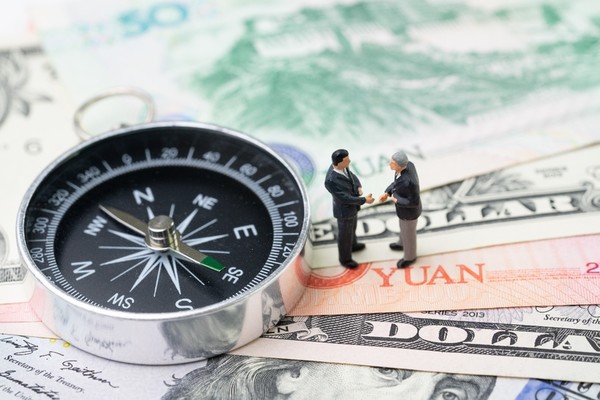
Non-U.S. companies involved with the re-exporting of U.S. technology or goods ought to familiarize themselves with all the applicable U.S. export legislation, no matter where they are. It is since the U.S. export and financial sanctions legislation has broad-ranging from extraterritorial reach. While firms with little if any link to the U.S. might believe they're not subject to U.S. jurisdiction, current enforcement cases are a stark reminder that this isn't the situation. That is because those laws apply to U.S.-origin goods wherever situated. Including foreign products comprising U.S.-origin parts or integrating U.S.-origin technology controlled from the U.S. export legislation. OFAC sanctions tackle the behavior of U.S. persons, meaning U.S. citizens and permanent residents wherever situated; most men in the U.S., no matter citizenship; and all of U.S. integrated entities and their overseas branches or subsidiaries owned or controlled by U.S. entities.
U.S. Export Laws
The EAR generally imposes identical licensing standards on exports since it will on reexports. Items subject to the EAR include things like: all U.S.-origin items where found; overseas made commodities which comprise controlled U.S.-origin commodities; and specific foreign-made direct goods of U.S.-origin engineering or applications. Non-U.S. good will be subject to the EAR in which the foreign-produced product integrates over a de minimis number of U.S.-origin parts or technologies.
The key to determining if or not non-U.S. merchandise is subject to the EAR is to ascertain if there's greater than a de minimis number of U.S.-origin parts or technologies. For many destinations, non-U.S. made items comprising controlled U.S. commodities, software, or technologies valued at 25 percent or less aren't subject to EAR jurisdiction. If, nevertheless, the non-U.S. merchandise destine for a nation in EAR group E:1 (e.g., Iran, North Korea), then the de minimis threshold is 10 percent or less of their entire value of the final thing. In the end, the use of the de minimis principle is dependent upon the Export Control Classification Number ("ECCN") of this U.S.-origin part or technologies and the best destination.
ITAR jurisdiction applies in which the protection article is from the U.S., irrespective of its source; the trade entails a U.S.-origin protection article or the trade calls for a defense article created or developed using U.S.-origin technical information or support subject to the ITAR.
Contrary to the EAR, the ITAR does not include an exclusion for non-U.S. items that include less than a de minimis quantity of U.S.-origin content. Rather, a translucent rule is adopted by which the ITAR sees the non-ITAR controlled final thing to restrain the ITAR controlled section comprised inside. Moreover, the usage of U.S.-origin ITAR control technical data or defense services in overseas production of defense articles will subject some post-produced with this kind of controlled data or solutions to the authority of the ITAR.
Scope of this EAR
The EAR applies to things in the USA, things of US source, where situated, foreign-produced items which include over the usual de minimis quantity of controlled US-origin material, and items which are the immediate product of specific US engineering and applications. This usually means that both US and non-US companies and persons might have compliance responsibilities under the EAR and the two US-origin and foreign-produced items can be subject to the EAR.
Topic to the EAR
All things located in the USA are subject to the EAR and also stay subject to the EAR after export by the USA, for re-export and move (in-country), with a few exceptions. A product subject to the EAR delivered from a foreign country to another foreign state is a-export'. Sometimes, things in the USA, such as engineering, may be considered exported although the technology hasn't left the United States, even if it's moved to some non-US person found in the USA. The EAR further explain:'Any launch in the USA of"technology" or supply code into a foreign person is a deemed export to the overseas individual's latest state of citizenship or permanent residency.'
Some things in the USA aren't subject to the EAR; these are discussed further below. There are also overseas products that are subject to the EAR in certain conditions when the foreign-produced item comprises over a de minimis quantity of controlled US content (the De Minimis Rule), and particular foreign-produced items which are the lead product of US-origin engineering and applications that are controlled for national security reasons.
Items not subject to the EAR
Things not subject to the EAR contain, among other items, the ones which are within the exclusive authority of the other US government service; particular books, such as books, papers, and periodicals; and data and applications that are printed, emerge during, or result from, basic research, is published in an academic institution class (in certain conditions) or look in printed patent applications.
RE-EXPORT OF U.S. GOODS below the EAR
Businesses may not presume that the allowed export of products in the U.S. implies that these products may then be re-exported into another state without additional consideration of U.S. export control legislation. Instead, the EAR demands the export and re-export of products to assess individually. The identical licensing requirements apply to re-exports regarding exports since the U.S. export control laws govern U.S.-origin goods irrespective of where they are.
EXPORT OF NON-U.S. PRODUCTS WITH U.S. COMPONENTS OR TECHNOLOGY
The EAR can also employ non-U.S. businesses that manufacture products that contain U.S. parts or technologies. The EAR put forth de minimis thresholds depending on the worth of the U.S. parts or technologies integrated into non-U.S.-made merchandise to find whether the item is subject to the EAR. The threshold principles apply if (I) that a non-U.S.-made product" integrates" controlled U.S.-origin commodities or has been"bundled" with controlled U.S.-origin applications, (ii) non-U.S.-made applications"integrates" controlled U.S.-origin applications, or (iii) non-U.S.-made technologies is commingled with or attracted from controlled U.S.-origin technology. For many destinations and things, non-U.S.-made merchandise or applications is subject to the EAR when the value of this U.S.-origin controlled material exceeds 25 percent of the entire value of the final item. The application of this threshold is dependent upon the ECCN of this U.S.-origin controlled material and also the best destination for which the non-U.S.-made thing gets export; specific guidelines apply to high-performance computers and encryption products and software. In contrast, there's no de minimis principle for defense articles, defense services, and associated technical information under the ITAR. The moment one ITAR part is set up in a non-U.S.-made item, the ITAR uses.
Extraterritorial Impact Cases
In the last few decades, the U.S. government has significantly more broadly implemented the extraterritorial reach of the U.S. export legislation and sanctions. 4: (A more comprehensive description of the settlement is available in our previous post, From A to ZTE: A Review of Lessons Learned in the ZTE case.) Despite working mostly in China, ZTE is giving among the largest penalties for violating applicable U.S. export and sanctions legislation. Though ZTE was lucky to prevent a refusal of export actions for any protracted time, this case indicates a renewed resolve to apply U.S. export legislation and sanctions, even against businesses operating primarily beyond the U.S.
A notable instance for violations of the ITAR and between a Spanish firm ended in administrative debarment. 5 Administrative debarment prohibits any individual from engaging directly or indirectly with the debarred celebration in action subject to the ITAR. Mr. Dominguez's illegal action was detected via"adverse reactions" into Blue Lantern checks, which can be end-use inquiries conducted across the globe by U.S. embassy employees. Mr. Dominguez tried to prevent a policy of refusal issued by DDTC by establishing new company names and other methods of circumvention. Mr. Dominguez ignored additional communication from DDTC associated with the suspected illegal action and finally ignored DDTC's charging correspondence, causing a default arrangement and debarment.
Many non-U.S. businesses have learned the hard way that a deficiency of a U.S. existence won't stop the extraterritorial enforcement of U.S. legislation. Though Aban is an Indian firm without U.S. offices, it had been subject to the extraterritorial reach of OFAC's authority on account of this re-exported oil rig components being U.S.-origin.
Steps to Comply with U.S. Export Laws
Since U.S. export legislation applies to the goods, exporters of all U.S.-origin products must be sure they comply with those laws. In case of a non-U.S. -source item is subject to the EAR by this de minimis principle. The exporter must find out if it's the re-export license is necessary, depending on the classification of the final thing, not the condition of the controlled U.S. content. Oftentimes, the end-use might be subject to a lower classification than the U.S.-origin content included inside and might not take a permit for re-export.
Furthermore, exporters and exporters must prepare for almost any end-use tests performed by the U.S. government. An end-use check makes it possible for the U.S. authorities to validate the end-use announced on the permit application is just like the true end-use of the coated product. End-use checks can also be utilized in conditions where a product sends subject to a permit exception. While an end-user test might appear overly sensitive to some foreign exporter, after experienced, an end-use test and positive result can make it much easier for U.S. exporters to get licenses when sending to the overseas business. Refusing an end-use test will cause an automatic adverse conclusion from the U.S. agent doing the test. This will probably bring about the organization listing on the Entity List or the Unverified List. A business listed on the Entity List will effectively reduce their export statements, and the majority of U.S. exporters won't send them to firms on the lists.
U.S. export and sanctions laws can be complex for anybody but might cause unnecessary headaches for both exporters that not find in the U.S. If these overseas exporters are subject to U.S. legislation they could face big consequences, if they don't comply with them. Therefore, foreign firms should also look at creating and implementing policies and procedures to navigate the most intricate region of U.S. export and financial sanctions laws.
